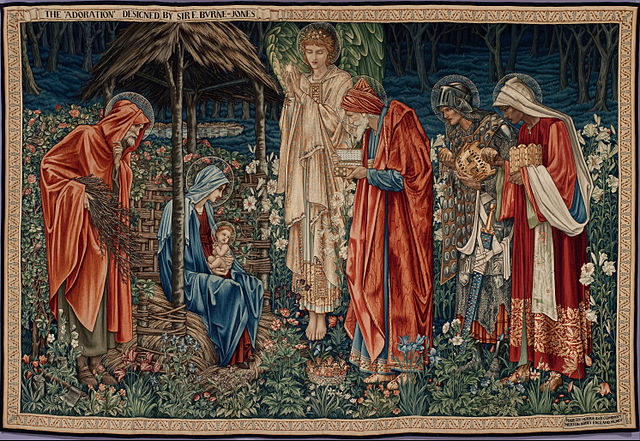Plough Monday is the traditional start of the English agricultural year. While local practices may vary, Plough Monday is generally the first Monday after Epiphany, 6 January. References to Plough Monday date back to the late 15th century. The day before Plough Monday is referred to as Plough Sunday, in which a ploughshare is brought into the local Christian church with prayers for the blessing of human labour, tools, as well as the land.
Plough Monday, from George Walker's The Costumes of Yorkshire, 1814
A plough being pulled through the streets of Whittlesey as part of the Whittlesey Straw Bear Festival procession. Ploughs were traditionally taken around by Plough Monday mummers and molly dancers in parts of Eastern England and in some places were used as a threat: if householders refused to donate to the participants their front path would be ploughed up.
The Twelfth Night gathering in Harrison Ainsworth's Mervyn Clitheroe (1858), illustrated by Phiz, depicting the northern Fool Plough dance
Whittlesey Straw Bear
Epiphany, or Eid al-Ghitas, also known as "Theophany" in Eastern Christian tradition, is a Christian feast day commemorating the visit of the Magi, the baptism of Jesus, and the wedding at Cana.
The Adoration of the Magi by Edward Burne-Jones (1904)
Adoration of the Magi by Bartolomé Esteban Murillo (17th century).
Adoration of the Magi by El Greco (1568, Museo Soumaya, Mexico City).
Holy (Epiphany) water vessel from 15th–16th centuries. It is found on Hisar near the town of Leskovac, Serbia. Photographed in National museum of Leskovac.








